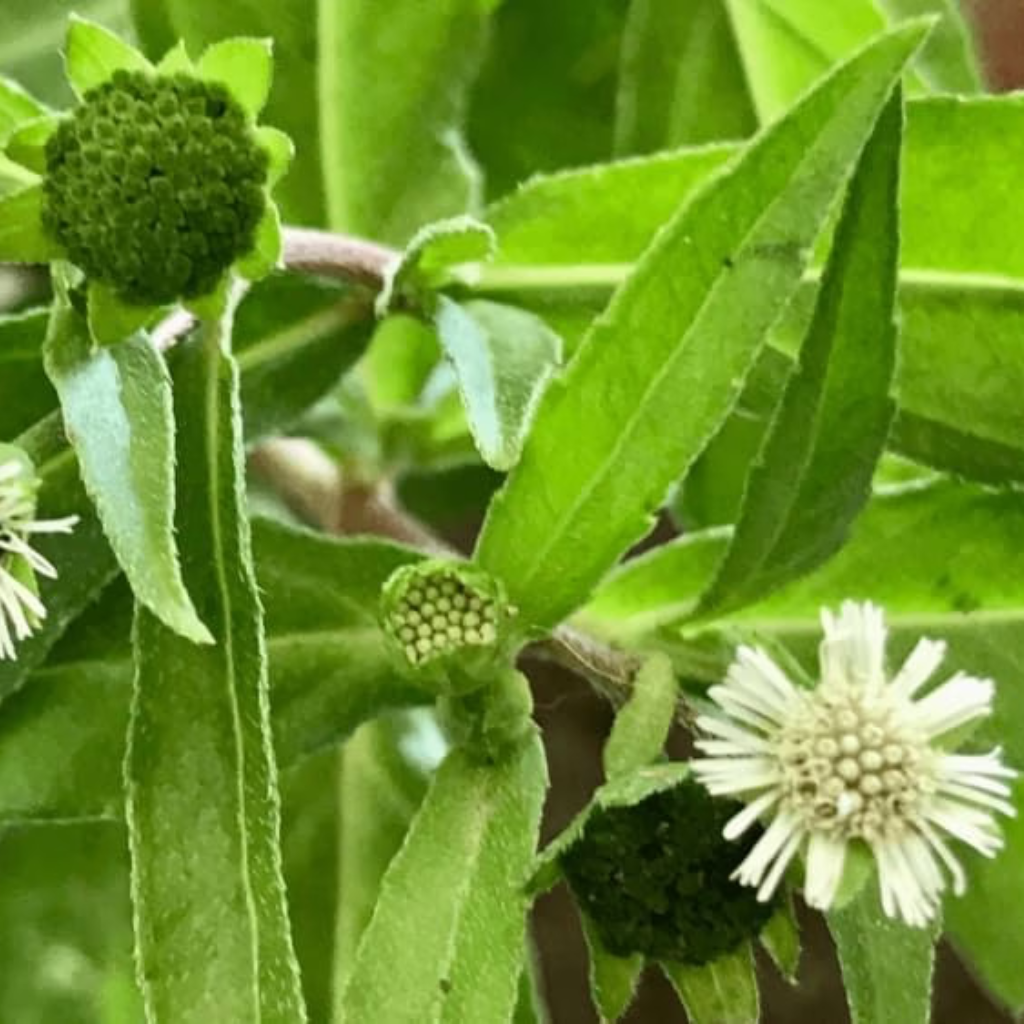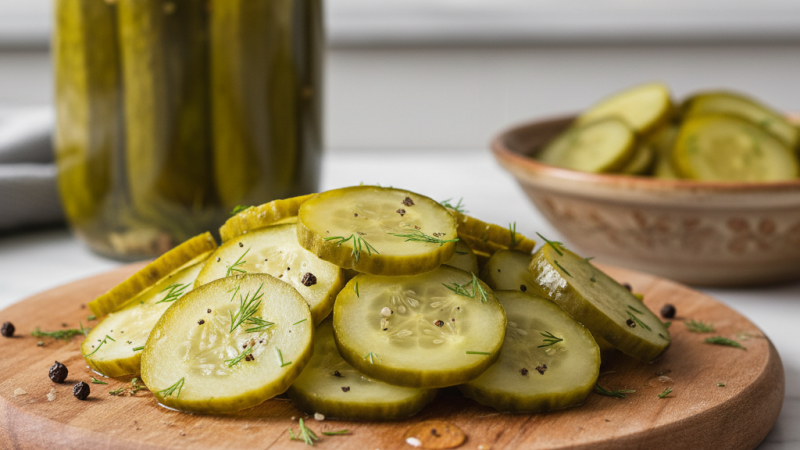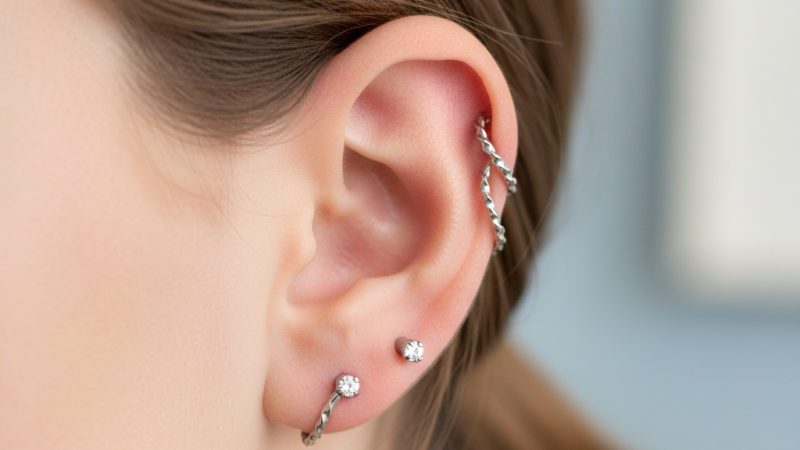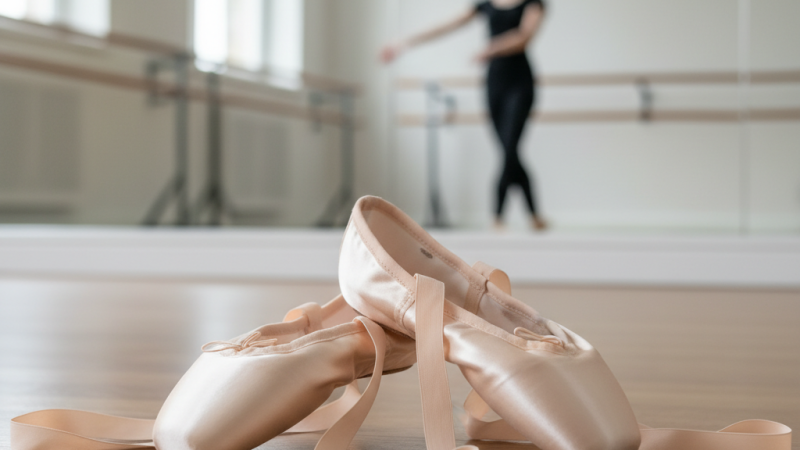Is Bhringraj Good for High Blood Pressure: A Comprehensive Analysis

High blood pressure has become an increasingly prevalent health concern affecting millions worldwide, silently damaging vital organs and increasing cardiovascular disease risk. While conventional medications offer effective management, many individuals seek complementary natural remedies to support their cardiovascular health. Among various herbal alternatives, bhringraj has emerged as a promising option, raising an important question: is bhringraj good for high blood pressure? This comprehensive guide explores the scientific evidence, traditional wisdom, and practical applications of this ancient Ayurvedic herb for blood pressure management.
Understanding Bhringraj: The Ancient Healing Herb
Bhringraj, scientifically known as Eclipta prostrata or Eclipta alba, belongs to the sunflower family Asteraceae and is commonly called “false daisy” in English. This low-growing perennial herb features white, daisy-like flowers and lanceolate leaves covered with fine hairs. The name bhringraj literally translates to “ruler of bees,” highlighting its popularity among pollinators in its native habitats across India, China, Brazil, and Southwest America.
Traditional Ayurvedic medicine has revered bhringraj as a powerful rasayana herb, meaning it promotes longevity and rejuvenation. The entire plant, including roots, stems, leaves, and flowers, contains valuable therapeutic compounds. Historically, practitioners have utilized bhringraj not only for hair care but also for liver protection, respiratory conditions, skin disorders, and importantly, cardiovascular health management. The herb’s cooling properties and bitter taste profile align perfectly with Ayurvedic principles for balancing the body’s doshas, particularly Vata and Kapha.
The Science Behind Bhringraj and Blood Pressure Regulation
Research investigating whether is bhringraj good for high blood pressure has revealed promising mechanisms through which this herb may support cardiovascular health. The primary bioactive compounds in bhringraj include wedelolactone, eclalbasaponins, flavonoids like luteolin and apigenin, alkaloids, triterpenoids, and phenolic acids. These phytochemicals work synergistically to influence multiple pathways involved in blood pressure regulation.
Clinical studies have demonstrated that bhringraj leaf powder administered to individuals with mild hypertension resulted in significant reductions in mean arterial pressure by approximately fifteen percent, alongside improvements in cholesterol levels and markers of oxidative stress. The mechanisms behind these effects involve several physiological processes that directly impact cardiovascular function.
One primary mechanism relates to the herb’s ability to promote vasodilation, the widening of blood vessels that allows blood to flow more freely. Bhringraj appears to stimulate the release of nitric oxide in blood vessel walls, which causes smooth muscle relaxation and improved circulation. Enhanced nitric oxide production reduces peripheral vascular resistance, effectively lowering the pressure required for the heart to pump blood throughout the body.
Additionally, bhringraj demonstrates natural diuretic properties, encouraging increased urine production and sodium excretion. Studies showed marked increases in urine volume and urinary sodium levels in subjects consuming bhringraj supplements. This diuretic effect helps reduce blood volume and consequently decreases the workload on the cardiovascular system, contributing to lower blood pressure readings.
Cardiovascular Benefits Beyond Blood Pressure
When examining is bhringraj good for high blood pressure, it’s essential to consider the herb’s broader cardiovascular effects. Bhringraj provides comprehensive heart health support through multiple mechanisms that extend beyond simple pressure reduction.
The herb exhibits significant cholesterol-lowering properties that address one of the major risk factors for hypertension and cardiovascular disease. Research documented reductions in total cholesterol, low-density lipoprotein fractions, triglycerides, and very-low-density lipoprotein fractions in hypertensive subjects taking bhringraj supplements. By improving lipid profiles, bhringraj helps prevent atherosclerosis, the hardening and narrowing of arteries that often accompanies and exacerbates high blood pressure.
Bhringraj’s potent antioxidant properties protect blood vessels from oxidative damage caused by free radicals. Studies revealed increased serum levels of vitamin C and tocopherols, along with reduced plasma lipid peroxides in individuals taking bhringraj. This antioxidant activity prevents endothelial dysfunction, maintaining the flexibility and health of arterial walls essential for proper blood pressure regulation. Healthy blood vessels respond more effectively to the body’s natural pressure-regulating signals, preventing dangerous spikes and maintaining stable readings.
The herb’s anti-inflammatory properties further support cardiovascular wellness by reducing chronic inflammation that contributes to hypertension development. Inflammation damages blood vessel linings, promotes plaque formation, and interferes with normal pressure regulation mechanisms. Bhringraj’s ability to modulate inflammatory responses helps preserve vascular integrity and function.
Stress Reduction and Blood Pressure Management
An often-overlooked aspect when considering is bhringraj good for high blood pressure involves the herb’s remarkable stress-reducing capabilities. Chronic stress represents one of the most significant modifiable risk factors for developing and maintaining elevated blood pressure. Stress hormones like cortisol cause blood vessels to constrict, heart rate to increase, and blood pressure to rise.
Bhringraj functions as an adaptogenic herb that decreases stress hormone levels and enhances concentration power. Its calming effects on the nervous system help break the stress-hypertension cycle that traps many individuals in a pattern of persistently elevated readings. By promoting mental relaxation and reducing anxiety, bhringraj addresses one of hypertension’s root causes rather than merely treating symptoms.
The herb’s influence on sleep quality further supports blood pressure management. Poor sleep is strongly associated with hypertension, and many individuals with high blood pressure experience sleep disturbances. Bhringraj promotes restorative sleep patterns, allowing the cardiovascular system to recover and reset during rest periods. Improved sleep quality contributes to better daytime blood pressure control and reduced cardiovascular strain.
Traditional practitioners often recommend bhringraj oil scalp massage as a method for promoting relaxation and mental calmness. This topical application provides a soothing sensory experience while allowing some herbal compounds to be absorbed, creating a holistic approach to stress management that supports blood pressure control through multiple channels.
Integrating Bhringraj with Other Ayurvedic Herbs
While exploring is bhringraj good for high blood pressure, it’s valuable to understand how this herb works synergistically with other traditional remedies. Ayurvedic practitioners often combine multiple herbs to create more comprehensive treatment protocols for hypertension management.
Bhringraj is frequently paired with brahmi, another stress-reducing herb that calms the mind and enhances focus. This combination addresses both the physical and psychological aspects of hypertension, providing dual-action support for individuals struggling with stress-related blood pressure elevation.
Arjuna bark represents another popular companion herb known for its specific cardiovascular benefits and heart-strengthening properties. When combined with bhringraj, arjuna provides targeted support for cardiac muscle function while bhringraj addresses vascular health and stress reduction. Together, these herbs offer comprehensive cardiovascular protection.
Ashwagandha, gokshura, and shankhpushpi are additional herbs commonly used alongside bhringraj in Ayurvedic hypertension protocols. These combinations take advantage of each herb’s unique properties to create a more robust therapeutic effect than any single ingredient could provide alone. However, such combinations should always be undertaken under professional guidance to ensure appropriate dosing and herb compatibility.
Practical Applications and Dosage Recommendations
For those wondering is bhringraj good for high blood pressure and how to use it effectively, several preparation methods and dosage forms are available. Traditional consumption methods include fresh juice, dried powder, tea infusions, and concentrated extracts, while modern formulations offer standardized capsules and tablets for convenient dosing.
Clinical research utilized dried bhringraj leaf powder at a dosage of three grams daily, divided into three doses, administered for sixty days to achieve blood pressure reduction. This translates to approximately six 500-milligram capsules taken throughout the day with meals. However, individual requirements may vary based on body weight, hypertension severity, and concurrent medications.
Bhringraj tea offers a gentle approach for those preferring traditional preparation methods. Steep one to two teaspoons of dried bhringraj leaves in hot water for ten to fifteen minutes, strain, and consume twice daily. This method provides a milder effect suitable for prevention or mild cases while offering hydration benefits.
Fresh bhringraj juice, though more challenging to obtain, represents the most potent form. Traditional dosing recommends two teaspoons of fresh leaf juice mixed with honey, taken twice daily. This preparation maximizes the availability of heat-sensitive compounds that may degrade during drying processes.
For those using bhringraj oil topically, regular scalp massage promotes relaxation and stress reduction that indirectly supports blood pressure management. Warm the oil slightly, massage into the scalp using circular motions, leave for thirty to sixty minutes, then wash thoroughly. Perform this treatment two to three times weekly for optimal stress-reducing benefits.
Safety Considerations and Potential Side Effects
When evaluating is bhringraj good for high blood pressure, understanding safety profiles and potential interactions is crucial. Bhringraj is generally considered safe when used appropriately, with centuries of traditional use supporting its favorable safety record. However, certain precautions deserve attention.
The herb’s cooling nature may cause discomfort in individuals with naturally cold constitutions or during cold weather. Some users report mild digestive upset when taking bhringraj on an empty stomach, so consuming it with food can minimize this effect. Occasionally, higher doses may produce a slight burning sensation in the digestive tract.
Pregnant and breastfeeding women should avoid bhringraj unless specifically recommended by a qualified healthcare provider, as safety data for these populations remains limited. Individuals scheduled for surgery should discontinue bhringraj at least two weeks beforehand, as its effects on blood pressure and blood clotting could complicate surgical procedures.
Drug interactions represent an important consideration. Bhringraj’s blood pressure-lowering effects may potentiate prescription antihypertensive medications, potentially causing excessively low readings, dizziness, or fainting. Anyone taking blood pressure medications must consult their physician before adding bhringraj to their regimen and may require medication dosage adjustments.
Similarly, individuals taking diuretics should exercise caution, as bhringraj’s natural diuretic properties could compound fluid loss and electrolyte imbalances. Blood thinning medications may interact with certain bhringraj compounds, though research in this area remains limited.
Lifestyle Modifications to Enhance Bhringraj’s Effectiveness
Understanding is bhringraj good for high blood pressure also means recognizing that herbal remedies work best within a comprehensive health strategy. Bhringraj should complement, not replace, essential lifestyle modifications proven to lower blood pressure naturally.
Dietary adjustments form the foundation of blood pressure management. Reducing sodium intake to less than two grams daily significantly impacts pressure readings. Emphasize potassium-rich foods like leafy greens, bananas, and sweet potatoes, which help counterbalance sodium’s effects. The DASH diet, rich in fruits, vegetables, whole grains, and lean proteins, has demonstrated powerful blood pressure-lowering effects when combined with herbal support like bhringraj.
Regular physical activity strengthens the cardiovascular system and promotes healthy blood pressure levels. Aim for at least thirty minutes of moderate-intensity exercise most days of the week. Walking, swimming, cycling, and yoga all provide excellent cardiovascular benefits without requiring strenuous effort. Exercise also reduces stress, creating synergy with bhringraj’s calming properties.
Weight management plays a critical role, as excess body weight increases the heart’s workload and raises blood pressure. Even modest weight loss of five to ten percent of body weight can produce meaningful pressure reductions. Bhringraj’s metabolism-supporting properties may facilitate weight management efforts when combined with appropriate diet and exercise.
Stress management techniques amplify bhringraj’s relaxing effects. Meditation, deep breathing exercises, progressive muscle relaxation, and mindfulness practices all lower stress hormone levels and promote cardiovascular calm. Regular yoga practice combines physical activity, flexibility training, and stress reduction in one powerful package.
Limiting alcohol consumption and avoiding tobacco completely are non-negotiable for blood pressure control. Alcohol temporarily raises blood pressure and interferes with medication effectiveness, while tobacco damages blood vessels and promotes hypertension development. These lifestyle factors can undermine even the most carefully planned herbal supplementation protocols.
Clinical Evidence and Research Findings
The question is bhringraj good for high blood pressure has been addressed through various research methodologies, from traditional observational studies to modern randomized controlled trials. While research quantity remains more limited compared to mainstream pharmaceuticals, existing studies provide valuable insights into the herb’s cardiovascular effects.
Controlled studies comparing bhringraj supplementation against placebo in mild hypertensive subjects demonstrated statistically significant reductions in blood pressure parameters, cholesterol levels, and oxidative stress markers. These findings suggest real therapeutic potential rather than merely placebo effects.
Animal studies have provided additional mechanistic insights into bhringraj’s cardiovascular actions. Research using rat models has demonstrated dose-dependent blood pressure reductions, improved endothelial function, and enhanced nitric oxide production. These preclinical findings support the mechanisms observed in human studies and suggest pathways for future investigation.
However, research limitations must be acknowledged. Most human studies have involved relatively small sample sizes and short durations, typically ranging from thirty to sixty days. Larger, longer-term studies would provide more robust evidence regarding bhringraj’s sustained effectiveness and safety profile for blood pressure management.
Additionally, most research has focused on individuals with mild to moderate hypertension. Evidence for bhringraj’s effectiveness in severe hypertension remains limited, and such cases always require medical supervision and likely pharmaceutical intervention. Bhringraj appears most appropriate as a complementary therapy or preventive measure rather than a primary treatment for advanced hypertension.
Bhringraj Compared to Conventional Blood Pressure Medications
When exploring is bhringraj good for high blood pressure, patients naturally compare herbal options with conventional medications. Understanding these differences helps set realistic expectations and guides appropriate treatment decisions.
Pharmaceutical antihypertensive medications typically produce faster, more dramatic blood pressure reductions than herbal remedies like bhringraj. Prescription drugs are extensively researched, standardized, and proven effective for managing moderate to severe hypertension. They represent the gold standard for individuals requiring immediate pressure reduction to prevent complications.
However, bhringraj offers certain advantages in specific contexts. The herb provides a gentler approach suitable for mild hypertension or borderline high readings where lifestyle modifications might suffice. Its multiple mechanisms of action address various contributing factors simultaneously rather than targeting a single pathway like many pharmaceuticals do.
Side effect profiles differ considerably. While prescription medications often cause specific adverse effects like dry cough with ACE inhibitors or dizziness with certain diuretics, bhringraj’s side effects tend to be milder and less frequent when used appropriately. This gentler profile makes bhringraj attractive for individuals concerned about pharmaceutical side effects.
Cost represents another consideration. Generic blood pressure medications are generally affordable, but brand-name options can be expensive. Bhringraj powder or capsules typically cost less than prescription medications, though quality varies significantly between products. Cost-effectiveness depends on individual circumstances and insurance coverage.
The ideal approach for many individuals may involve integrative strategies combining conventional medicine’s proven effectiveness with complementary herbal support. This synergistic model allows for potentially lower pharmaceutical doses while maximizing therapeutic benefits and minimizing side effects. However, such combined approaches must always occur under medical supervision to prevent adverse interactions or complications.
Selecting Quality Bhringraj Products
The answer to is bhringraj good for high blood pressure partially depends on product quality, as efficacy varies dramatically between different preparations. Understanding quality markers helps ensure you’re getting effective, safe bhringraj supplements.
Look for products using standardized extracts with defined percentages of key active compounds like wedelolactone. Standardization ensures consistent potency across batches and allows for accurate dosing. Products listing only “bhringraj extract” without standardization details may contain widely varying compound levels.
Organic certification indicates the herb was grown without synthetic pesticides or fertilizers, reducing contamination risk. Given bhringraj’s traditional wild-harvested nature, organic cultivation helps ensure sustainability while protecting against agricultural chemical exposure that could compromise therapeutic benefits or introduce toxins.
Third-party testing by independent laboratories provides additional quality assurance. Look for products tested for heavy metals, microbial contamination, and pesticide residues. Reputable manufacturers willingly provide certificates of analysis demonstrating their products meet purity standards.
Traditional Ayurvedic companies with established reputations often produce high-quality bhringraj products following authentic preparation methods. These manufacturers typically have expertise in proper harvesting times, preparation techniques, and formulation principles that maximize therapeutic effectiveness.
Whole plant preparations may offer advantages over isolated compounds, as the full spectrum of phytochemicals work together synergistically. While standardized extracts ensure consistent dosing, whole herb products provide the complex chemical matrix nature intended, potentially offering broader therapeutic effects.
Long-Term Management and Monitoring
Addressing is bhringraj good for high blood pressure requires understanding that hypertension management is a long-term commitment rather than a short-term fix. Successful blood pressure control through any method, herbal or pharmaceutical, demands ongoing attention and adjustment.
Regular blood pressure monitoring is essential when using bhringraj for hypertension management. Home blood pressure monitors allow daily tracking of readings, revealing patterns and trends that single office measurements might miss. Track pressures at consistent times daily, noting any correlations with medication or supplement timing, stress levels, or dietary factors.
Keep detailed records of your blood pressure readings, bhringraj dosage, any side effects, and relevant lifestyle factors. Share these records with your healthcare provider during regular check-ups. This information helps assess effectiveness and guides any necessary treatment adjustments.
Schedule regular medical appointments to ensure comprehensive cardiovascular health monitoring. Blood pressure management involves more than just the numbers on the monitor. Periodic blood tests assessing kidney function, electrolyte levels, and cholesterol profiles provide important context for treatment effectiveness and safety.
Be patient with results. Unlike pharmaceutical medications that often produce rapid effects, herbal remedies like bhringraj typically require several weeks of consistent use before demonstrating full therapeutic benefits. Most studies showing blood pressure reductions used supplementation periods of four to eight weeks. Premature discontinuation may prevent you from experiencing bhringraj’s full potential.
Remain flexible in your approach. If bhringraj alone doesn’t adequately control blood pressure after a reasonable trial period, discuss alternative or additional strategies with your healthcare provider. This might involve adjusting dosage, adding complementary herbs, intensifying lifestyle modifications, or considering pharmaceutical options if necessary.
Frequently Asked Questions
How long does it take for bhringraj to lower blood pressure?
Most research studies examining bhringraj’s effects on blood pressure used supplementation periods of four to eight weeks before observing significant reductions. Individual response times vary based on factors including hypertension severity, dosage, product quality, and concurrent lifestyle modifications. Some individuals notice improvements within two to three weeks, while others require longer consistent use. Patience and regular monitoring are essential, as herbal remedies typically work more gradually than pharmaceutical medications. If no improvement occurs after eight to twelve weeks of appropriate dosing, consult a healthcare provider about adjusting your treatment approach.
Can bhringraj replace blood pressure medication?
Bhringraj should not replace prescribed blood pressure medications without explicit physician approval and supervision. While research demonstrates bhringraj can reduce mild to moderate hypertension, it typically produces smaller pressure reductions than pharmaceutical medications. For individuals with severe hypertension or those at high cardiovascular risk, prescription medications remain the safest and most effective primary treatment. Bhringraj may serve as a complementary therapy alongside medications, potentially allowing for lower pharmaceutical doses over time. However, any medication adjustments must occur under medical supervision with careful monitoring to ensure blood pressure remains adequately controlled throughout the transition.
What is the best form of bhringraj for blood pressure management?
The optimal bhringraj form depends on individual preferences and specific health circumstances. Clinical studies demonstrating blood pressure reduction primarily used dried leaf powder in capsule form, suggesting this represents an effective delivery method. Standardized extracts offer consistency in active compound content, ensuring reliable dosing. Fresh juice provides maximum potency but is less convenient and more difficult to source. Tea preparations offer a gentle approach suitable for mild cases or prevention. Consult with an Ayurvedic practitioner or healthcare provider to determine which form best suits your needs, considering factors like hypertension severity, tolerance, and lifestyle factors.
Are there any foods to avoid while taking bhringraj for blood pressure?
When using bhringraj for blood pressure management, minimize sodium intake as excessive salt intake counteracts the herb’s pressure-lowering effects. Limit processed foods, canned items, restaurant meals, and added table salt. Avoid excessive caffeine, as it temporarily raises blood pressure and may interfere with bhringraj’s calming properties. Reduce alcohol consumption, which raises blood pressure and strains the liver, potentially interfering with bhringraj’s hepatoprotective effects. Minimize saturated fats and trans fats found in fried foods, fatty meats, and processed snacks, as these promote inflammation and cardiovascular disease. Instead, emphasize whole foods, fruits, vegetables, whole grains, lean proteins, and healthy fats from sources like olive oil, nuts, and fatty fish.
Can bhringraj cause blood pressure to drop too low?
While rare, bhringraj can potentially cause excessively low blood pressure, particularly when combined with prescription antihypertensive medications or other blood pressure-lowering herbs. Symptoms of hypotension include dizziness, lightheadedness, fainting, blurred vision, fatigue, nausea, and cold, clammy skin. These symptoms warrant immediate medical attention and discontinuation of bhringraj until consulting a healthcare provider. Individuals with naturally low blood pressure should use bhringraj cautiously and under medical supervision. Starting with lower doses and gradually increasing while monitoring blood pressure regularly helps minimize risk. If you experience persistent symptoms suggesting low blood pressure, contact your healthcare provider promptly for evaluation and treatment adjustment.
How does bhringraj compare to brahmi for blood pressure?
Bhringraj and brahmi, while both traditionally used in Ayurveda for cardiovascular health, have somewhat different primary mechanisms and applications. Bhringraj demonstrates more direct cardiovascular effects, including vasodilation, diuretic properties, and cholesterol reduction, making it particularly suitable for blood pressure management. Brahmi primarily works through stress reduction and nervous system calming, indirectly supporting blood pressure control by addressing psychogenic hypertension. Many practitioners combine both herbs to address both physiological and psychological aspects of high blood pressure. Individual response varies, and some people may respond better to one herb or benefit most from their combination. Consulting an Ayurvedic practitioner can help determine the most appropriate approach for your specific constitution and health situation.
Is bhringraj safe for people with kidney disease?
Individuals with kidney disease should exercise extreme caution with bhringraj and consult a nephrologist before use. While bhringraj’s diuretic properties might seem beneficial, kidney disease requires careful fluid and electrolyte balance that herbal diuretics could disrupt. Additionally, impaired kidney function affects how the body processes and eliminates herbal compounds, potentially leading to accumulation and adverse effects. Some bhringraj products may contain contaminants particularly dangerous for kidney disease patients. Furthermore, many individuals with kidney disease take multiple medications that could interact with bhringraj. Only use bhringraj for blood pressure management in the context of kidney disease under close medical supervision with regular monitoring of kidney function, electrolyte levels, and blood pressure parameters.
Can pregnant women use bhringraj for high blood pressure during pregnancy?
Pregnant women should avoid bhringraj unless specifically prescribed by a qualified healthcare provider familiar with both prenatal care and herbal medicine. Safety data for bhringraj use during pregnancy remains limited, and the herb’s effects on fetal development are not fully understood. Pregnancy-related hypertension, including gestational hypertension and preeclampsia, requires careful medical management due to serious risks for both mother and baby. These conditions demand proven, closely monitored treatments rather than experimental herbal approaches. If you develop high blood pressure during pregnancy, consult your obstetrician immediately for appropriate evaluation and treatment. After delivery and if breastfeeding, continue avoiding bhringraj until your healthcare provider confirms safety for both you and your infant.
Does bhringraj interact with common blood pressure medications?
Bhringraj may interact with various blood pressure medications, potentially enhancing their effects and causing excessive blood pressure reduction. When combined with ACE inhibitors, beta-blockers, calcium channel blockers, or diuretics, bhringraj might produce additive effects leading to hypotension. The herb’s natural diuretic properties could compound effects of prescribed diuretics, potentially causing dehydration or electrolyte imbalances. Additionally, some evidence suggests bhringraj may influence blood clotting, which could interact with anticoagulant or antiplatelet medications sometimes prescribed alongside antihypertensives. Never combine bhringraj with prescription blood pressure medications without physician approval. If your doctor approves combined use, expect closer monitoring and possible medication dose adjustments to maintain safe, effective blood pressure control while minimizing adverse effects.
What lifestyle changes enhance bhringraj’s effectiveness for blood pressure?
Several lifestyle modifications significantly enhance bhringraj’s blood pressure-lowering effects. Adopt a heart-healthy diet emphasizing fruits, vegetables, whole grains, lean proteins, and healthy fats while limiting sodium, saturated fats, and processed foods. Engage in regular physical activity, aiming for at least thirty minutes of moderate exercise most days. Maintain a healthy body weight, as even modest weight loss substantially reduces blood pressure. Practice stress management through meditation, yoga, deep breathing, or other relaxation techniques that complement bhringraj’s calming properties. Ensure adequate, quality sleep of seven to nine hours nightly. Limit alcohol consumption and eliminate tobacco use completely. Stay well-hydrated with water throughout the day. These lifestyle factors create a synergistic effect with bhringraj, maximizing blood pressure reduction and overall cardiovascular health improvement beyond what either approach achieves alone.
Conclusion: Is Bhringraj Good for High Blood Pressure?
After examining the scientific evidence, traditional applications, and practical considerations, the question “is bhringraj good for high blood pressure” can be answered with cautious optimism. Research demonstrates that bhringraj does offer legitimate blood pressure-lowering effects through multiple mechanisms, including vasodilation, diuretic action, stress reduction, cholesterol improvement, and antioxidant protection. Clinical studies have documented meaningful reductions in blood pressure parameters alongside improvements in cardiovascular risk factors when bhringraj is used appropriately.
However, bhringraj represents a complementary approach rather than a primary treatment for moderate to severe hypertension. It works best for individuals with mild elevations, those seeking preventive strategies, or as an adjunct to conventional medications under medical supervision. The herb’s gentler action requires patience and consistent use over several weeks to achieve full benefits, and it should always be integrated within a comprehensive cardiovascular health strategy including dietary modifications, regular exercise, stress management, and appropriate medical care.
Quality matters significantly, so invest in reputable products from established manufacturers using standardized extracts and third-party testing. Monitor blood pressure regularly, maintain detailed records, and work closely with healthcare providers to ensure safe, effective management. Never discontinue prescribed medications or ignore concerning symptoms based solely on herbal supplementation.
For those willing to commit to a holistic, long-term approach to cardiovascular wellness, bhringraj offers a time-tested, generally safe option supported by both traditional wisdom and emerging scientific evidence. When used thoughtfully as part of an integrated health strategy, this ancient Ayurvedic herb may indeed contribute meaningfully to healthy blood pressure management and overall heart health.






